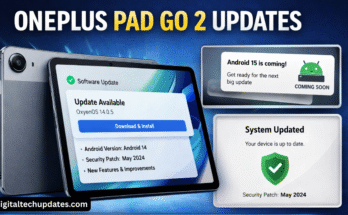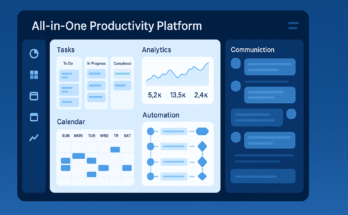Introduction
In today’s fiercely competitive landscape, efficient, data-driven recruitment processes have become a critical differentiator for organizations striving to attract and retain top-tier talent. This shift has primarily been powered by the widespread adoption of applicant tracking systems (ATS), technology platforms at the heart of modern talent acquisition. Gone are the days when recruitment was synonymous with manual resume sorting and labor-intensive processes. Today, ATS systemsdrive productivity by doing far more than simply storing resumes. They streamline and automate workflows, decrease administrative burdens, and provide recruiters with dynamic tools for strategic talent management, allowing organizations to pursue quality hires while maintaining operational efficiency.
By centralizing recruitment data, delivering real-time analytics, and automating routine yet crucial activities, ATS platforms have empowered hiring teams to elevate their decision-making capabilities. These systems enrich the candidate and employer experience, ensuring that even high-volume recruitment cycles are precisely and quickly executed. As more organizations seek ways to enhance their talent acquisition strategies, it becomes increasingly essential to understand not just how applicant tracking systems work, but also how they have evolved, the advanced features they offer, the broad spectrum of benefits they provide, the potential challenges they present, and the future trends shaping their continued evolution.
Evolution of ATS
The origins of applicant tracking systems coincided with a broader wave of digitization in the corporate world. Early ATS platforms represented a revolutionary shift from physical resumes and manual record-keeping to digital repositories. With this shift, recruiters could now store, search, and retrieve candidate profiles with greater efficiency. However, as the scale and complexity of hiring grew due to increasing globalization, job market competition, and evolving legal requirements, the initial functionality of these systems was no longer enough.
Modern ATS platforms have evolved to become the central nervous systems of recruitment departments. Today’s solutions are built to integrate seamlessly with an extensive range of other human resources technologies, such as job boards, onboarding tools, video interviewing software, and background screening providers. This deep integration ensures that recruiters have a cohesive, end-to-end recruitment experience, eliminating data silos and administrative friction. Hiring managers can access a unified view of candidates and recruitment metrics, resulting in faster response times, better communication, and improved coordination across departments. As organizations have grown more data-centric, the importance of ATS systems as repositories and analytical engines has put a sharper focus on their pivotal role.
Key Features of Modern ATS
Applicant tracking systems have advanced well beyond simple databases. Today’s platforms encompass a highly sophisticated set of features designed to meet the evolving needs of high-volume recruiters and organizations tackling specialized, niche roles. This breadth of functionality transforms hiring from a tactical activity into a strategic business advantage.
- AI-Powered Automation:Leading-edge ATS platforms fundamentally leverage artificial intelligence more efficiently to manage hiring at scale. Automated resume screening, natural language processing, and advanced matching algorithms speed up the initial candidate review process while reducing unconscious bias. AI-powered chatbots provide candidates with immediate responses to questions and application status updates, improving engagement and responsiveness.
- Candidate Relationship Management (CRM):Modern ATS solutions now include built-in CRM capabilities. This empowers recruiters to proactively develop and nurture talent pipelines, maintain relationships with passive candidates, create customized outreach, and launch engagement campaigns. Such tools help prepare talent pools for new roles, ensuring faster time to hire and stronger employer branding.
- Advanced Analytics:Access to robust, real-time dashboards and customizable analytics underpins a data-driven hiring strategy. Hiring managers can track key metrics such as time-to-fill, source effectiveness, cost-per-hire, and candidate diversity. Predictive analytics can anticipate recruitment needs, identify bottlenecks, and recommend process improvements for future hiring cycles.
- Mobile Accessibility:With most candidates and recruiters now using mobile devices, mobile-optimized ATS interfaces have become essential. On-the-go access supports communication, application review, and task management, ensuring seamless interaction between candidates and hiring teams regardless of their devices or location.
Benefits of Implementing ATS
Integrating an ATS into therecruitment processdelivers measurable results across every stage of the human journey, delivering both immediate returns and long-term strategic advantages.
- Efficiency and Time Savings:ATS platforms radically reduce administrative burdens by automating repetitive and time-consuming recruitment tasks (like resume parsing and initial screening). This empowers recruiters to use their expertise on high-value activities, such as candidate engagement, interviewing, and talent strategy, rather than routine paperwork.
- Improved Candidate Experience:Streamlined workflows and personalized communications—such as timely updates and easier application processes—drive a positive candidate experience. This helps organizations stand out in a crowded job market and builds goodwill, supporting short- and long-term talent acquisition goals.
- Data-Driven Decision Making:Built-in analytics and reporting illuminate every aspect of the hiring funnel, from sourcing and candidate screening to offer acceptance. This visibility allows for ongoing process refinement, more strategic workforce planning, and greater team accountability.
- Compliance and Standardization:Adhering to local, national, and international hiring regulations can be daunting. ATS platforms automate workflows to ensure legal compliance, reduce the risk of costly mistakes, and promote equitable, unbiased recruitment practices while tracking compliance data for audit purposes.
Challenges and Considerations
While applicant tracking systems are indispensable, successful implementation requires proactive management of various challenges and strategic considerations.
- Keyword Optimization:Many ATS platforms depend on keyword parsing to filter candidates. While efficient, this can inadvertently screen out talented individuals with atypical resumes or non-traditional career paths. Augmenting keyword matching with AI-driven contextual analysis and human review balances speed with quality and inclusivity.
- Candidate Experience Balance:Over-reliance on automation can unintentionally depersonalize the hiring process. It’s essential to strike the right balance, using automation where it adds value but preserving human touchpoints—especially during interviews or negotiations—to keep the process engaging and respectful.
- Data Security and Privacy:Handling large volumes of sensitive candidate data requires rigorous privacy and security protocols. Robust encryption, secure access controls, and compliance with regulations such as GDPR safeguard both candidates and employers, maintaining trust and upholding corporate reputation.
- Training and Adoption:Even the most advanced ATS can falter without proper user adoption. Thorough staff training, clear documentation, and ongoing support for evolving features ensure that teams maximize their investment by leveraging the system’s full capabilities.
Future Trends in ATS
As technology continues to reshape the workplace, applicant tracking systems are poised to gain even greater sophistication and influence over recruitment.
- Enhanced AI Integration:The next generation of ATS will incorporate deeper AI and machine learning capabilities, delivering ever-more-accurate candidate matching, automated scheduling, real-time sentiment analysis, and advanced bias detection for fairer hiring outcomes.
- Improved Candidate Experience:Expect to see AI-driven chatbots grow more intelligent and conversational. Real-time, transparent application tracking and highly personalized candidate communications will become standard, removing friction and fostering trust at every step.
- Greater Customization:With organizations demanding recruitment strategies that reflect their unique cultures and needs, future ATS platforms will offer unprecedented flexibility in workflow design, integrations, and reporting, giving companies complete control over their talent acquisition journey.
- Integration with HR Tech Ecosystems:Future-focused ATS platforms will serve as hubs in fully connected HR technology ecosystems, combining recruitment data with onboarding, performance management, and workforce analytics for holistic talent management and strategic business planning.
Applicant tracking systems are central in shaping efficient, strategic, and equitablehiring practicesin the modern workforce. Their ability to automate key workflows, deliver actionable analytics, and unify the talent acquisition process makes them indispensable for organizations pursuing a competitive edge. Exploring applicant tracking system best practices is highly recommended for organizations looking to deepen their understanding and ensure optimal usage. In contrast, the leading resource on what an applicant tracking system is offers foundational knowledge.
As ATS solutions continue to advance and organizations harness these capabilities proactively, those who prioritize thoughtful implementation and address evolving recruitment challenges will be positioned to win the race for top talent and define the future of hiring.



